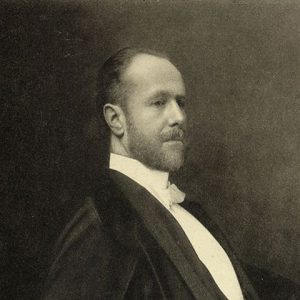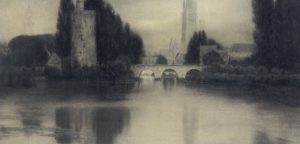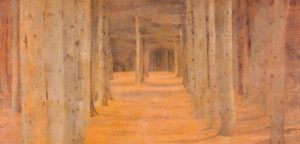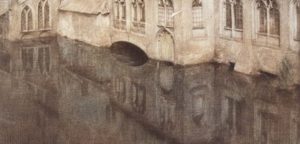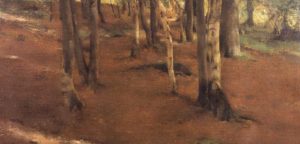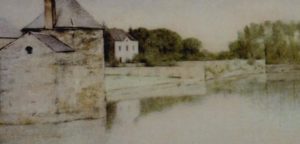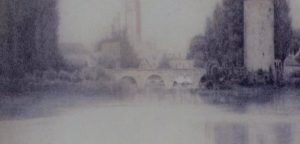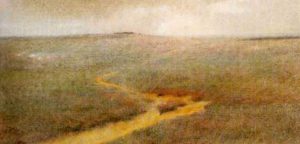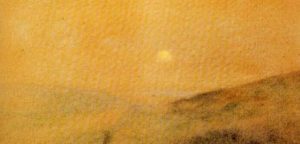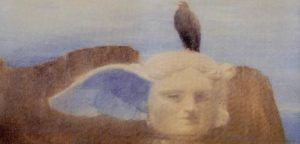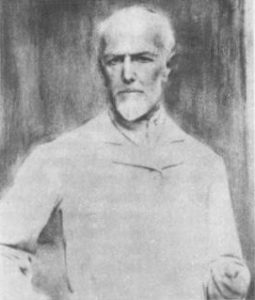Fernand Khnopff was born on the 12th of September in 1858 in the city of Grimbergen, Belgium.
1858 - 1921
Fernand Khnopff
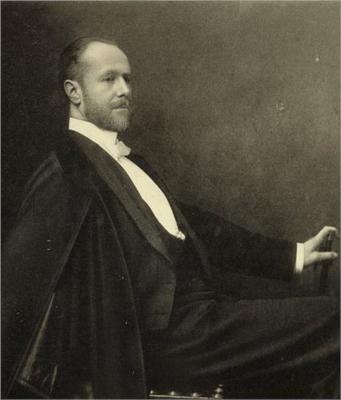
description
Fernand-Edmond-Jean-Marie Khnopff was a Belgian painter, graphic artist and sculptor, designer, and author of the decoration of the De La Monnet Theater in Brussels.
He was born into a rich bourgeois family from Flanders. His father assumed that his son would become a lawyer and sent him to Brussels to study law. However, Fernand soon left school, deciding to devote himself to painting.
Fernand Khnopff was one of the founders of the “Union of XX” group of artists in 1883 and is considered the most prominent representative of Belgian Symbolism in painting. He presented his works mainly in Paris, exhibited his paintings at the first salon “Rose and Cross”, and also participated in the exhibition of the Vienna Secession, which united Art Nouveau artists. Khnopff was also a talented art expert and photographer. He mixed different techniques and styles in his painting and made a great influence on the development of European Art Nouveau.
Fernand Khnopff was a unique person. He surrounded himself with legends and myths, at the same time, being secretive. In his house-studio, built according to his own project and reminiscent of a theater or a temple of art rather than an ordinary house, he welcomed only his favorites. The only close friend and permanent model of the artist was his sister Margaret, whose appearance he admired and whose image captured in several hundred of his works.
Despite this, Khnopff was very popular during his lifetime. He was emulated by young painters and admired by art experts and critics; he was the most influential among Symbolists, and the art of the Belgian artist became a source of inspiration of such a bright talent as Gustav Klimt.
Key ideas:
– The early works of Khnopff distinguished by their poetry and emotionality, very soon were replaced by more strange Symbolist canvases, in which dreams and subconscious have the central place. In the paintings of Khnopff, women are often depicted as some mythological creatures, sphinxes and griffins, with magnificent postures and cold facial expressions. Strict and static images, fanned by a light haze, resemble statues.
– The artist uses warm color gamma consisting of pale green, gray and brownish-yellow shades. His drawing is perfect, and the composition is precisely calibrated and thought out.
– In addition to paintings on mythological scenes and female portraits, Fernand Khnopff often depicted the city of Bruges, in which he lived when he was young. In these canvases, the city is represented as deserted and abandoned: there are no trees and flowers; nothing reveals the presence of a human being.
1858
1876
1877
1878
1881
1883
1885
1889
1895
1898
1921
The birth of the artist
Entered the Brussels Academy of Art
Giving up studies at the Faculty of Law, entered the Brussels Academy of Art.
Went to Paris
Went to Paris to complete his studies of pictorial art. In France, he became acquainted with the works of Delacroix and Moreau and became one of Symbolists.
The artist visited the private Julian Academy in Paris
The artist visited the private Julian Academy in Paris.
The works were severely criticized
First presented his work to the public at the “Salon de l’Essor” in Brussels. The works were severely criticized, and only Emil Verharen wrote a positive review.
«Les XX»
He became one of the founders of the association of artists “Les XX” (the famous Belgian “Twenty”), which played an important role in the development of Belgian and European painting. Regularly participated in exhibitions of the group.
Got acquainted with Joseph Peladan
Got acquainted with Joseph Peladan, who ordered him illustrations for his book and introduced him to the circle of the Parisian Symbolists. The artist began to take part in exhibitions of the “Rose and Cross salon”.
For the first time, he made a trip to England
For the first time, he made a trip to England, after which he visited this country more than once, exhibiting his works there.
Began working as a correspondent for the British art magazine “The Studio”
Began working as a correspondent for the British art magazine “The Studio”.
In Vienna, his works provoked rave reviews
Represented his works at the 21st exhibition of the Vienna Secession. In Vienna, his works provoked rave reviews.
The death of the artist
The artist died on the 12th of November in 1921 in Brussels.

